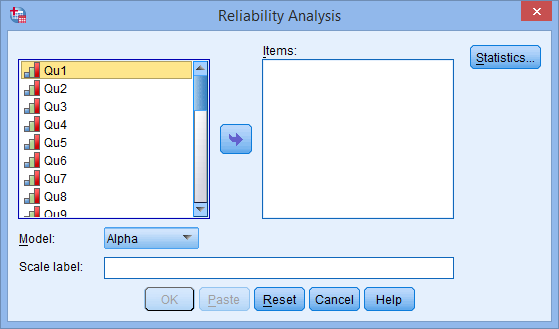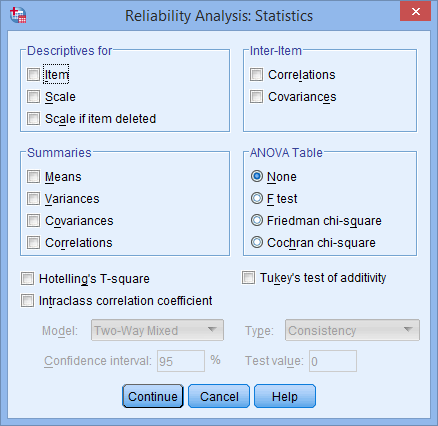

The DPP seems to have increased student participants’ engagement in the classroom. The DPP seems to have a positive effect on student participants’ academic success. The DPP seems to help student participants improve their grades. The Influence on Academics Scale was associated with these nine survey items: Then, follow the same procedure to calculate the Cronbach’s alpha for the Influence on Academics Scale. First, replicate the results for the General Impressions Scale. The sample dataset includes data for the four variables related to the General Impressions Scale as well as data for the nine variables related to a second scale, Influence on Academics. If so, that may be another indication that it might be worth considering removing that item from the scale.ĭownload this sample dataset, and see whether you can replicate the results presented above. Look to see whether any of the correlations listed here are low. We will also take a look at the Corrected Item-Total Correlations column. This might be the case with item G2, as Cronbach’s alpha would increase to 0.895 if this item were deleted from the scale. Cronbach’s alpha increasing when an item is removed is an indication that the item might not be a good fit for the scale. If that is the case, we might consider removing the item from the scale to improve the scale’s reliability. Look to see whether any of the four variables have a Cronbach’s alpha that is larger than our calculated Cronbach’s alpha of 0.879 if that item were deleted or removed from the analysis. 
The last column of this table displays the value that Cronbach’s alpha would be if any one of the four items were deleted from the scale. Next, take a look at the Item-Total Statistics table, which is presented in Figure 4.

Typically, an alpha of 0.7 or higher is considered acceptable, with values approaching 0 considered to be poor or unacceptable. The closer an alpha is to 1.0, the better the internal reliability. Cronbach’s alpha will be calculated to assess the extent to which the four variables, or survey items, represent a single construct: General Impressions of the DPP.įigure 3: Reliability Statistics for Items Comprising the General Impressions Construct.Ĭronbach’s alpha typically ranges from 0 to 1.0. They are coded on a fourpoint Likert scale, with “1” representing Completely disagree, “2” representing Somewhat disagree, “3” representing Somewhat agree, and “4” representing Completely agree. The four survey items describe the four variables of interest in this example.
My students who participate seem to enjoy being a part of the DPP (G4). My students understand the purpose of the DPP (G2). I understand the purpose of the DPP (G1). We examine the construct, “General Impressions of the DPP,” which was associated with four survey items: 
The example includes data for 13 survey items from 29 respondents.
#CRONBACH ALPHA SPSS HOW TO#
This example demonstrates how to calculate and interpret Cronbach’s alpha using a subset of survey data from a study that examined teachers’ perceptions of a high school dropout prevention program (DPP Geiger & Amrein-Beardsley, 2017). 2 An Example in SPSS: Opinions About a Drop Out Prevention Program








 0 kommentar(er)
0 kommentar(er)
